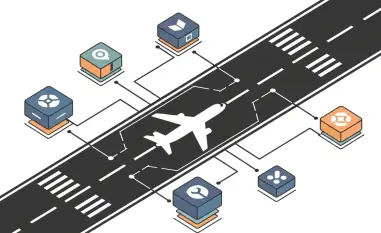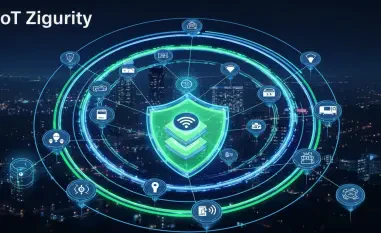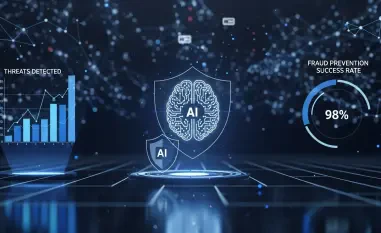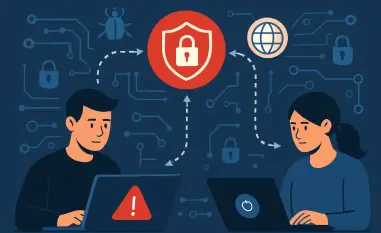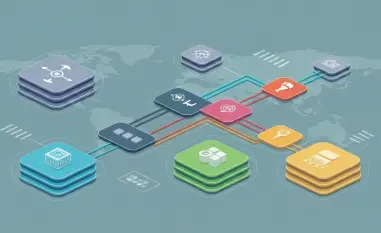Introduction
Imagine a government agency, tasked with safeguarding critical national data, suddenly finding itself compromised—not through a sophisticated software exploit, but through a simple phone call to a help desk agent. This scenario is becoming alarmingly common as cybercriminals shift their focus from technical vulnerabilities to human weaknesses, making the targeting of help desk staff in agencies a significant cybersecurity threat. This FAQ article aims to explore the reasons behind this trend, delving into the tactics used by hackers and the vulnerabilities they exploit. Readers can expect to gain a clear understanding of why help desks are prime targets, the evolving nature of social engineering, and strategies to bolster defenses against these breaches.
The scope of this content covers key aspects of the issue, from the specific reasons hackers zero in on help desk personnel to the broader implications for government security. By addressing common questions, the goal is to provide actionable insights and raise awareness about the importance of a human-centric approach to cybersecurity. Each section is designed to break down complex concepts into digestible information, ensuring clarity on this pressing concern.
Key Questions or Key Topics
Why Are Help Desks Considered High-Value Targets for Hackers?
Help desk staff in government agencies often hold the keys to sensitive systems, making them attractive targets for cybercriminals. These agents typically have the authority to reset passwords, manage multi-factor authentication devices, and resolve access issues, providing a direct pathway to privileged information. If compromised, a help desk agent can inadvertently grant attackers legitimate credentials, enabling them to navigate networks, escalate privileges, and access critical data with ease.
The significance of this vulnerability lies in the trust and access inherent to the help desk role. Attackers exploit this by using deception to manipulate agents into bypassing security protocols. For instance, a hacker might pose as a high-ranking official in distress, pressuring an agent to reset credentials under the guise of urgency. This tactic circumvents even the most robust technical defenses, as it targets human judgment rather than software flaws.
Supporting this concern, experts note that the consequences of such breaches can be catastrophic, given the sensitive nature of government data. A single lapse can lead to unauthorized access to personally identifiable information or classified documents, posing risks to national security. This underscores the critical need to protect these frontline employees as a priority in cybersecurity strategies.
How Have Social Engineering Tactics Evolved to Exploit Help Desk Staff?
Social engineering, the art of manipulating individuals into divulging confidential information, has grown remarkably sophisticated in targeting help desk personnel. Unlike earlier, broad phishing attempts, modern attacks are highly personalized, often relying on detailed reconnaissance from data breaches or social media profiles to craft convincing impersonations. Hackers may pose as specific employees or external professionals, tailoring their approach to exploit trust.
An example of this sophistication is seen in cases where attackers impersonate authority figures or even medical professionals to deceive agents. In one documented incident, a threat actor posed as an oncologist to convince a help desk specialist at a health institution to reset credentials, leveraging the emotional weight of a supposed emergency. Although the attempt was thwarted by the agent’s intuition, such isolated successes cannot be relied upon as a consistent defense mechanism.
The evolution of these tactics highlights a shift toward exploiting human emotions and situational pressures rather than technical gaps. With personal information readily available on the dark web, attackers can create highly believable scenarios, making it increasingly difficult for staff to discern legitimate requests from malicious ones. This trend demands updated training and tools to counter the growing complexity of these human-centered attacks.
Why Are Traditional Verification Methods No Longer Effective Against These Attacks?
Traditional identity verification methods, such as asking for static personal details like the last four digits of a Social Security number, have become obsolete in the face of modern cyber threats. The widespread availability of personal data on illicit markets means that attackers can easily obtain such information to bypass these checks. This renders once-reliable security questions ineffective against determined hackers.
Adding to the challenge is the rise of advanced technologies like AI-powered deepfakes, which can replicate voices or likenesses in real-time to deceive even cautious employees. Such tools allow attackers to mimic trusted individuals during phone or video interactions, further eroding the reliability of conventional verification processes. Help desk agents, often under pressure to resolve issues quickly, may struggle to detect these sophisticated impersonations.
The inadequacy of outdated methods points to a pressing need for innovative approaches to identity confirmation. Without adapting to these new threats, agencies remain vulnerable to breaches that exploit stolen data and cutting-edge technology. This gap in security protocols emphasizes the importance of revising verification standards to align with current risks.
What Makes Government Agencies Particularly Vulnerable to These Breaches?
Government agencies handle vast amounts of sensitive information, from classified documents to critical infrastructure data, making them prime targets for cyber attackers. A breach in such an environment can have far-reaching consequences, including national security risks, financial losses, and disruptions to essential public services. This high-stakes context amplifies the impact of any successful attack.
Help desk staff within these agencies are often the first point of contact for access-related issues, positioning them as gatekeepers to valuable systems. Yet, they may not always receive the specialized training needed to recognize and resist advanced social engineering tactics. This combination of high-value data and potential human vulnerabilities creates an ideal environment for cybercriminals to exploit.
Moreover, the bureaucratic nature of many agencies can lead to delays in updating security protocols or implementing new training programs, further exacerbating risks. The sheer volume of data and the complexity of systems managed by these entities mean that even a single compromised credential can open doors to widespread damage. Protecting these environments requires a focused effort on fortifying human defenses alongside technical measures.
What Can Be Done to Protect Help Desks from Cyber Threats?
Addressing the threat to help desk staff requires a human-centric cybersecurity strategy that complements existing technical defenses. Identifying high-risk employees, such as those with public-facing roles or privileged access, is a crucial first step. Tailored training programs should be developed to equip these individuals with the skills to recognize and respond to social engineering attempts effectively.
Beyond training, deploying advanced analytics to monitor for anomalous behavior can help detect potential breaches before they escalate. For example, systems that flag unusual access requests or patterns can alert supervisors to investigate further. Updating identity verification processes to resist deepfake technology and stolen personal data is also essential, ensuring that authentication methods remain secure in the face of evolving threats.
A layered defense approach, combining employee education with technological safeguards, offers the most comprehensive protection. By treating the human layer as both the first and last line of defense, agencies can significantly reduce the likelihood of successful attacks. This proactive stance is vital for safeguarding sensitive information and maintaining trust in government operations.
Summary or Recap
This article addresses critical questions surrounding the targeting of agency help desks by hackers, shedding light on the shift from technical exploits to human-centered attacks. Key points include the high-value nature of help desk roles due to their access privileges, the sophistication of modern social engineering tactics, and the obsolescence of traditional verification methods. The vulnerability of government agencies, given the sensitive data they manage, further amplifies the urgency of addressing these threats.
Main takeaways emphasize the need for a human-centric defense strategy that prioritizes specialized training, behavioral analytics, and updated authentication processes. These measures aim to protect the most exploited entry point—human trust—while complementing existing security systems. The implications are clear: without adapting to these evolving risks, agencies remain at significant risk of breaches with severe consequences.
For readers seeking deeper exploration, resources on cybersecurity best practices and social engineering prevention are recommended. Exploring materials from recognized industry leaders can provide additional insights into implementing effective defenses. Staying informed about emerging threats and solutions remains essential in this dynamic landscape.
Conclusion or Final Thoughts
Reflecting on the discussions, it becomes evident that hackers have found a potent strategy in targeting agency help desks, exploiting human vulnerabilities to bypass even the most fortified technical barriers. The sophistication of social engineering tactics and the high stakes of government data breaches paint a challenging picture for security teams. These insights drive home the necessity for immediate and innovative action to protect critical systems.
Moving forward, agencies should prioritize investing in comprehensive training programs tailored for help desk staff, ensuring they are equipped to counter advanced impersonation attempts. Adopting cutting-edge verification methods and behavioral monitoring tools is also seen as a vital step to close existing gaps. By focusing on strengthening the human layer of defense, a more resilient cybersecurity posture can be achieved against ever-evolving threats.
The relevance of this issue to individual roles within agencies is worth considering, as every employee plays a part in maintaining security. Evaluating personal preparedness to recognize and resist social engineering attempts could mark the difference between a secure system and a catastrophic breach. Taking proactive steps to stay informed and vigilant is, therefore, not just an organizational imperative but a personal responsibility.


